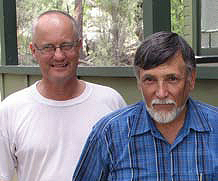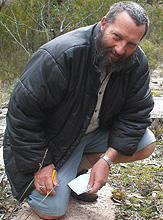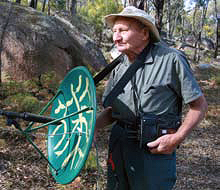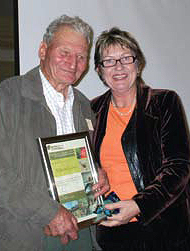|
The Girraween area has always provided ample interest for plant and animal enthusiasts. While developing and maintaining a popular national park can be time consuming, the park's staff also find the opportunity to enjoy the natural splendours of Girraween.
Tom Ryan utilised his botanical skills and love of bird watching to put together lists and drawings of birds and plants in the 1960s. While many other rangers over the years added to Tom's initial findings, it was the likes of Paul Grimshaw (a botanist and birdwatcher), Peter Haselgrove and, later, Colleen Gravatt, who also recorded species and had specimens verified by the Queensland Herbarium and Museum. Today's animal and plant lists have also been made possible by new discoveries from other park staff; including plant and animal specialists from Toowoomba, such as Kym Sparshott and Rod Hobson.
Bill Goebel has spent his lifetime exploring the nooks and crannies of Girraween; looking for new discoveries and adding to his unofficial research of Girraween's ecology. Without his intimate knowledge of the area, many locations of rare and endangered species would be unknown. Bill especially has been captivated by the shy, but charismatic, superb lyrebird and even more so with the mesmerising songs that the male lyrebird uses to lure a female companion.
In 2005, local landholders, special interest groups and Girraween rangers formed Girraween's Wombat Interest Group (WIG) to determine the whereabouts and status of the park's remaining Common Wombat populations. While it is too early to reach any conclusions about the health and well-being of Girraween's wombat populations, we can safely say that Girraween's Common Wombats should be more appropriately named Uncommon Wombats!
Next...
Brotherhood.
|
|

Peter Haselgrove (left) and
Paul Grimshaw (right).

Rod Hobson.

Bill Goebel recording Superb Lyrebird song.

Bill Goebel with the former
Minister of Environment Lindy
Nelson-Carr receiving an award
for his voluntary contributions at
Girraween National Park.
|

